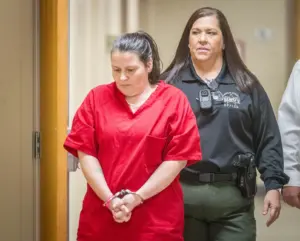Add splendor to your porch or patio with colorful container gardening
Gardening in containers is one of the most versatile and creative forms of garden design. Planting a container garden is much like creating a floral arrangement – except live plants are enjoyed for a whole season.
Almost any plant grows in a container when proper conditions are provided and adds a versatile splash of color and art wherever desired. Some other reasons for container gardening are as follows:
- Your backyard or traditional gardening space is limited or unavailable.
- Your time for gardening is limited.
- Your mobility is limited to working in raised beds or containers.
- Your gardening site is unsuitable for growing desired plants because of the soil conditions, unsuitable sun or shade or other environmental factors.
- You have a desire to be a creative garden artist!
The biggest disadvantages to growing plants in containers are the maintenance requirements of watering and fertilizing.
Here are some helpful techniques for successful container gardening, including choosing containers and potting mix, selecting plants, planting, fertilizing and watering.
CHOOSING A CONTAINER
Generally, plants can be grown in anything that will hold growing media and allow proper drainage. Some of the more traditionally used containers include terra cotta pots, plastic pots, hanging baskets, wire baskets lined with sphagnum moss or fibrous liners, concrete planters, planter boxes, whiskey barrels, 5-gallon buckets, tubs and bushel baskets. Some of these containers are more durable than others.
Be creative when choosing a container. Selecting a container that fits the look you wish to create is half the fun of container gardening. Containers can be window boxes, wooden wine crates, tires, bags of potting soil or even your favorite old boot.
Some self-watering containers have been manufactured to improve drainage and also have built-in reservoirs for watering plants. Whatever container you choose, consider the following:
- The container must have a bottom hole for adequate drainage.
- The container must be large enough to hold the minimum amount of medium required for mature plants to grow.
- The type of container used depends on the location and the plant selected. Avoid using black containers in full sun. Remember that terra cotta and other porous containers wick water away from plants.
- Decide whether the container needs to be attractive, if it’s in a place of high visibility.
- Containers can be painted to create a different look or to create a cooler surface that will reflect heat.
- Consider whether you might want to move the container to a different location later. If so, keep in mind the weight factor. Styrofoam peanuts can be used in the bottom of the container rather than filling it fully with potting mix. Also, the new fiberglass or Styrofoam planters are lightweight and decorative.
SELECTING A POTTING MIXTURE
It is important to select a growing medium that drains well but that will also help keep plants from drying out between waterings. Keeping containers moist yet well drained is the most important key to successful container gardening.
The best growing mixture is one that is soil-less. Soil-less media are free of any disease pathogens, insect pests and weed seeds. They are also generally lightweight and porous, allowing for a well-drained yet moisture-retentive mix.
Premixed growing media for container gardens are available from garden centers. However, be careful not to use peat or peat-lite mixes alone. By themselves, these media tend to become compacted, too lightweight and difficult to wet.
You can create your own blend by using peat moss, vermiculite or perlite, sterile potting mix or compost – make sure it is thoroughly composted – and coarse builder’s sand. To determine how much lime might be needed to bring the pH into the 6.0–6.8 range, send a sample of the mixture to a soil testing laboratory.
Some commercially prepared growing mixtures have an added wetting agent, which is a great help when it comes to planting and watering. You could consider adding water-absorbing polymers or “gel” that absorbs and retains up to 400 times its weight in water. These polymers are nontoxic and last for a number of years before breaking down in the environment. Read the label carefully to understand the proper amount of polymer needed for a specific container size.
Most potting mixtures become compacted and plants become root-bound over time. It is best to replace containers with fresh media at least once a year or every other season. Plants remaining in the same pot for a year or more also need root pruning to maintain health and vigor.
SELECTING PLANTS
Most vegetables are grown in a particular season of the year, making them excellent container garden plants. Some vegetable varieties have a more compact growth habit, such as Fanfare cucumber and Husky Gold tomato. Look for All-American Selections Winners, many of which are excellent choices for container gardening.
The primary keys to successfully growing vegetables in containers are to plant them in the proper-sized container and to keep them watered. Vegetables are about 99 percent water. When growing them in containers, it is especially important to ensure consistent moisture. Choose a container large enough that plants don’t dry out between waterings. For example, tomatoes must have a container with a minimum of 5 gallons potting mix. Smaller vegetables, such as radishes and lettuce, can be grown in a half gallon or less.
Plant a kitchen container garden that includes herbs, salad greens, garlic and other easy-to-grow vegetables. Many of salad greens can be thinned and harvested throughout the cool season, and leaves and herbs can be snipped as needed.
MIXED CONTAINERS
Container gardens do not have to be limited to one type of plant. Vegetables can be interplanted with herbs, annuals or vines. Some vegetables can be used as ornamentals with their contrasting colors, textures and forms. Research has shown that interplanting and companion planting interrupts disease and pest cycles.
The limiting factors when mixing plants in the same container are the same requirements for light and water. If you’re considering aesthetics, work toward a design balance, coordinating colors, textures, variety, height and flow.
PLANTING
Before planting the container garden, first determine how the plants will fit or be arranged in the container. Cover the drainage hole in the container, using pieces of broken pottery or mesh screen, to prevent the potting mix from clogging the hole.
Fill the container about three-fourths full. Moisten potting mix thoroughly. Allow it to settle, and then add more media if needed. Always remove plants from their propagation or nursery container before planting.
Starting with healthy, disease-free and pest-free seeds and plants ensures success. If direct-seeding a container garden, plant seeds at the proper planting depth and season according to the germination and planting recommendations.
After the seeds germinate and the plants put out their first true leaves, thin the seedlings to the recommended spacing by pinching out extras. This reduces root disturbance and allows seedlings to grow without competing with each other.
FERTILIZING
Some soilless mixes used for container gardening do not contain fertilizers. In this case, you will need to add trace elements that plants would otherwise obtain naturally from garden soil. Slow-release fertilizers supplying all the nutrients needed for a container garden are available. Nitrogen is slowly released to plant roots, providing necessary fertility throughout the growing season without burning plant roots. Fertilizers are salts and when overused can burn or kill plants. These salts can build up in potting media over time and also in porous container materials, such as terracotta.
Wash porous pots with a 10 percent bleach solution before planting to remove salt buildup from previous crops.
If additional fertilization is needed, a water-soluble fertilizer like Miracle Grow, Peters and others can be used to supplement. Follow label directions on all fertilizers, and keep records of planting and fertilization dates.
WATERING
The most critical and time-consuming part of maintaining container gardens is watering. This is particularly true as plants mature and roots crowd the container.
As a general rule, plants grown in full sun require thorough watering two to three times a week. Mature plants might have to be watered once or twice a day during the hot days of summer. Tips to remember:
- Porous containers, such as clay, dry out more quickly and can wick water away from plants.
- Growing plants that require full sun should not be put in black containers.
- Water-holding polymers or gels retain moisture for the more needy plants.
- Watering time can be reduced by installing a drip irrigation system with an automated timer.
- Containers can be placed on trays filled with gravel or marble pebbles covered in water, keeping them cool and providing moisture without creating a drainage problem. Change this water regularly to prevent mosquito problems.
A FEW FINAL TIPS
Container-grown garden plants are more susceptible to freezing, requiring winter protection such as mulching, using wind screens, putting the container in the ground or moving the container to a protected area.
Some vining plants require staking and trellising, such as tomatoes, cucumbers, beans and ornamental climbers. Anchor these containers to prevent them from blowing over.
Clean used containers before planting in them. A 10 percent bleach solution kills any pests and removes fertilizer salts.
Season porous containers before planting in them by soaking them in water. Do not allow them to dry out.
Styrofoam peanuts in the container bottom reduces the weight.
Harden-off newly propagated plants by exposing them gradually to full sun and wind.
Place containers on legs, bricks, coasters or saucers to allow drainage and to protect the surface underneath.






